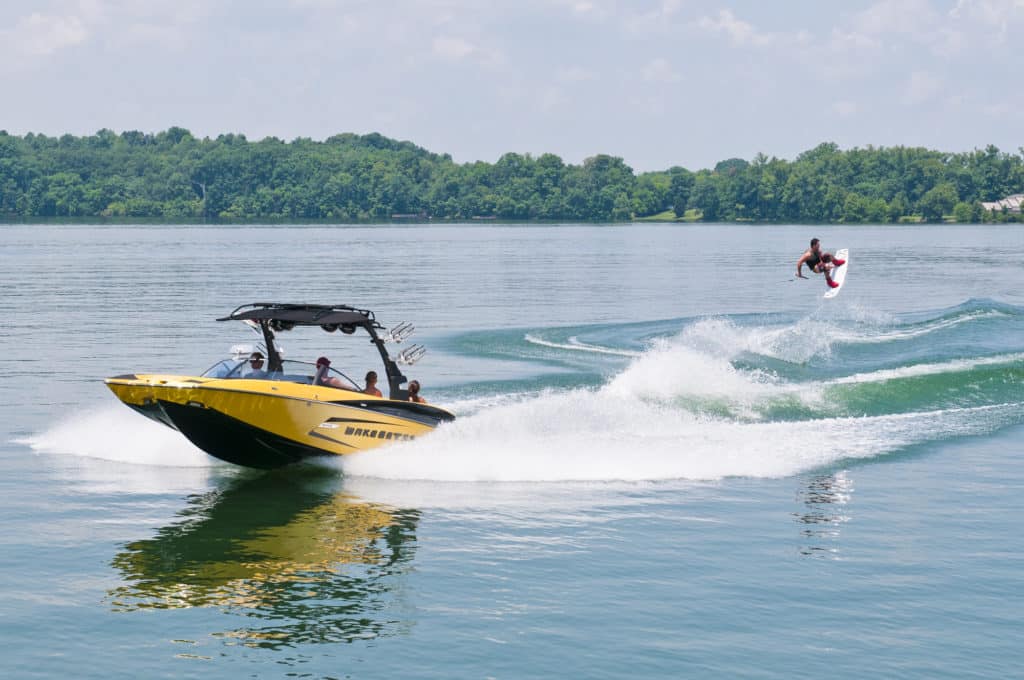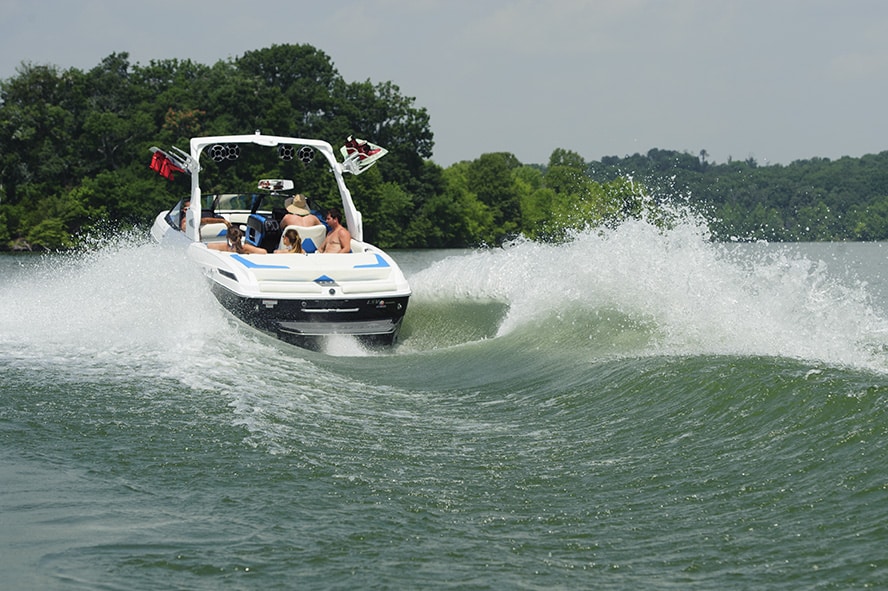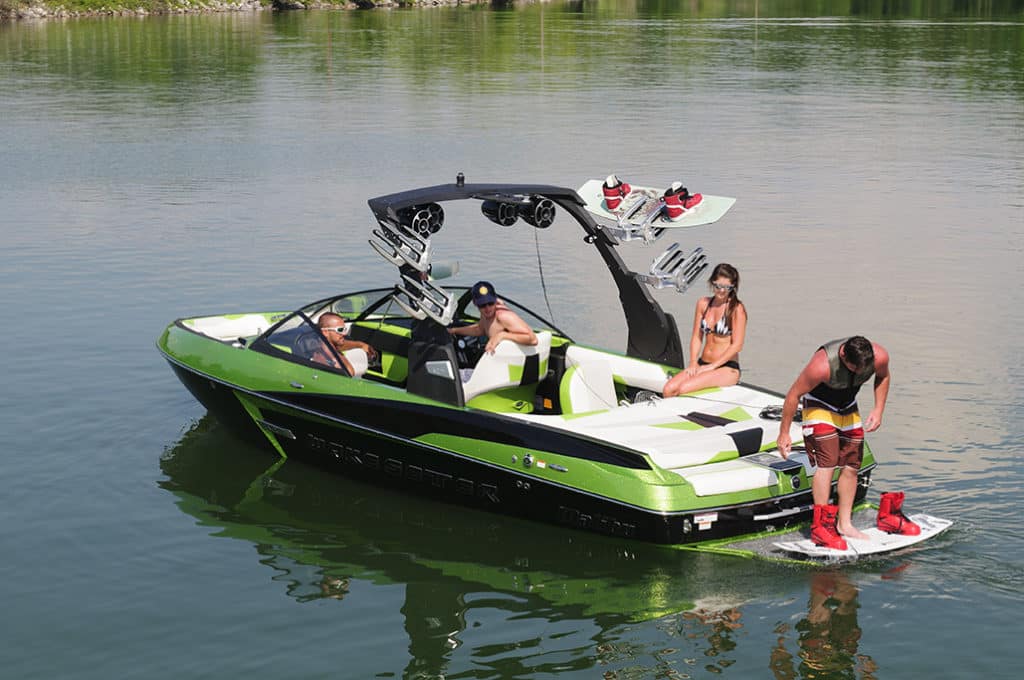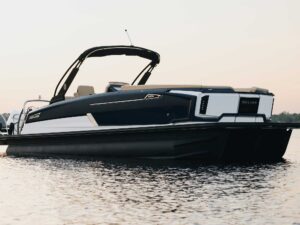


Wonderful Watersports
Sure, you can tow a tube or even a wakeboarder behind all sorts of vessels — from pontoons to sterndrives — but if your family is passionate about water sports, an inboard should reside at the top of your wish list. From creating consistent, balanced ramps to tracking true even with a hard-edging rider in tow, today’s inboards are purpose built to perfectly pull everything from wakeboarding and waterskiing to wakesurfing and wakeskating. And if you think immaculately groomed ramps are the exclusive playground of elite athletes, guess again. The consistent pop of an inboard wake will lead to fewer falls and more fun for the entire family, resulting in a boatload of eager riders.
Safe Surfing
Thanks to its brisk bottom turns and low-impact approachability, wakesurfing is fast becoming the watersport of choice for many a boater owner. Unlike water skiers, wakeboarders and tubers who are pulled by ropes and handles as long as 80 feet, wakesurfers ride in much closer proximity to the boat — at times within a couple feet of the transom. Combine that proximity with the position of the prop on an outboard or sterndrive and you have a potentially dangerous cocktail. In the V-drive configuration that dominates the modern inboard market, the prop is tucked under the transom, placing it at a much safer distance for surfers.
Smarter Surfing
In addition to their safer setups, inboards are also better equipped for wakesurfing. Speed control is virtually universal on inboards these days, and many models boast sub-floor, hard-tank ballast systems, which produce wave-creating displacement with the flip of a switch or the touch of a button. Still, up until a few years ago, building a solid swell behind your boat was, well, kind of a pain in the butt. The need to list the boat to one side meant you had to cram all your passengers into the back corner of the boat, and if you had both regular- and goofy-footed surfers, your cockpit could quickly resemble a game of musical chairs. Then Malibu introduced its SURF GATE system and took all the work out of wakesurfing. SURF GATE and similar systems allow you to switch from wakeboarding to wakesurfing and from a port-side wave to a starboard-side wave in a matter of seconds — all with the tap of a touchscreen display at the helm.
Surprising Seating and Storage
If your image of an inboard interior is of a bulky engine box sitting smack dab in the center of a ski boat’s narrow beams, it’s high time you update your impression. The vast majority of today’s inboard boats feature a V-drive configuration, which moves the engine farther astern, freeing up space amidships for sprawling seating and cavernous storage. Just take Malibu’s recently introduced Wakesetter 24 MXZ for example. The 24′ 5″ boat seats 18 between the wraparound seating in the cockpit and the impressively broad playpen-style seating in the bow. Inboard manufacturers are making full use of the space with amenities typically reserved for cruisers like wet bars, heads, and convertible seating setups.
Hairpin Handling
Anyone who’s ever figure-eighted their way across a glass-calm lake in a direct-drive ski boat know just how responsive inboards can be. While today’s larger inboard incarnations aren’t quite as nimble, their articulating rudders yield a tighter turning radius than their sterndrive counterparts, which makes short work of picking up fallen riders. They also typically hold speed better, produce less bow rise, and track straight as an arrow — all of which makes it a heck of a lot easier for you to deliver perfect (or at least near-perfect) pulls.









